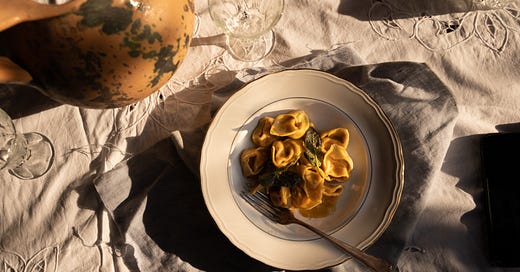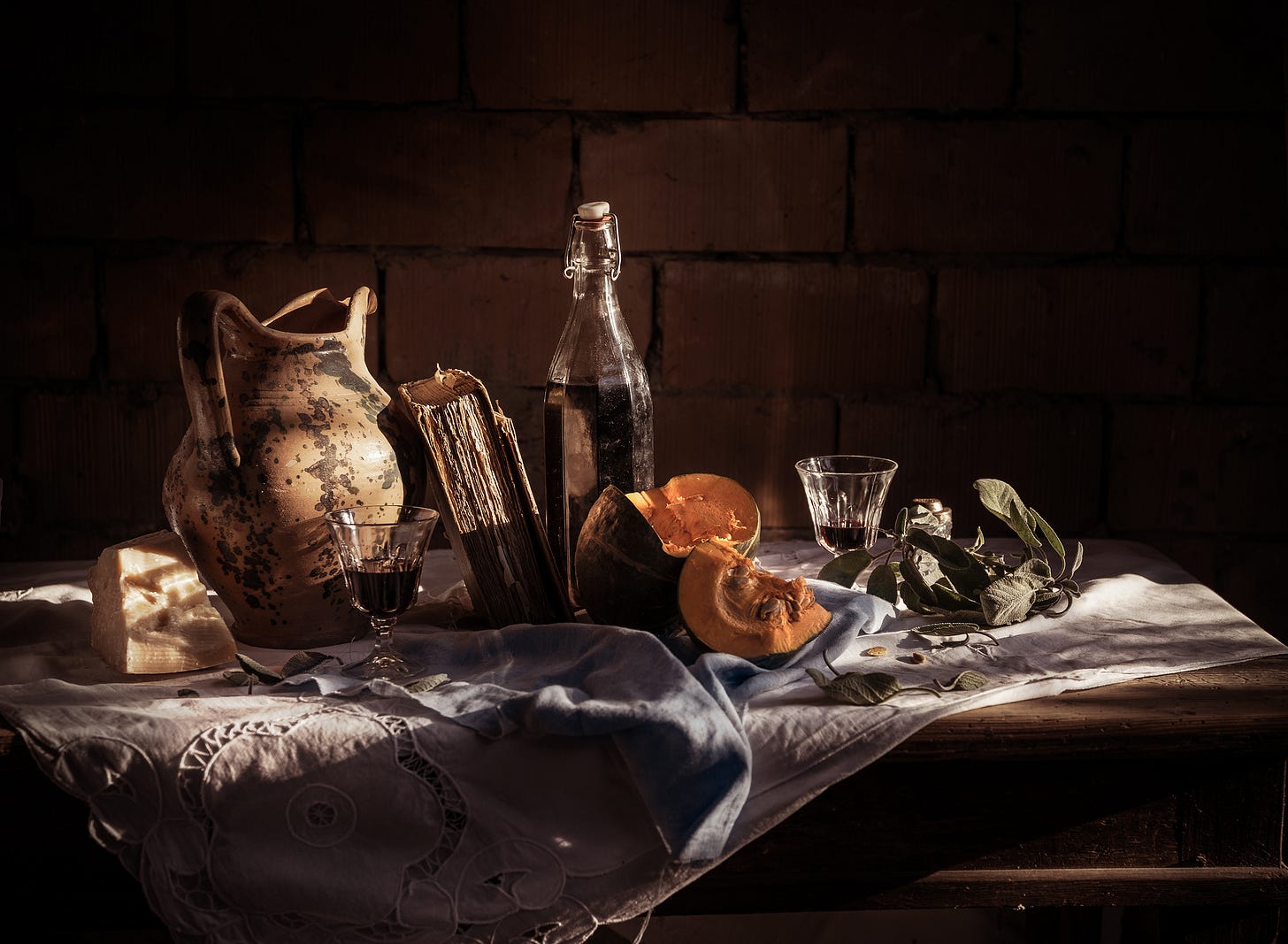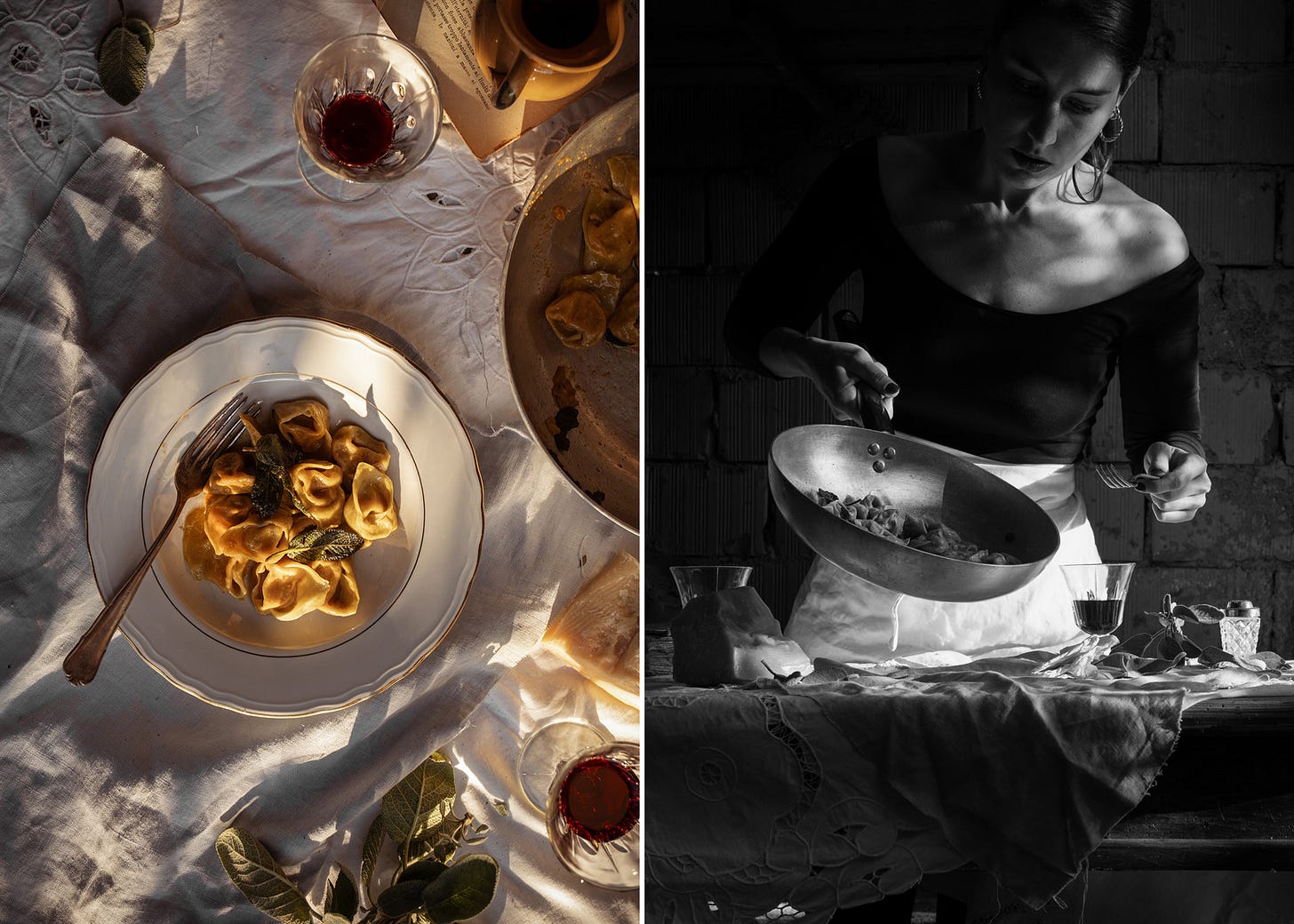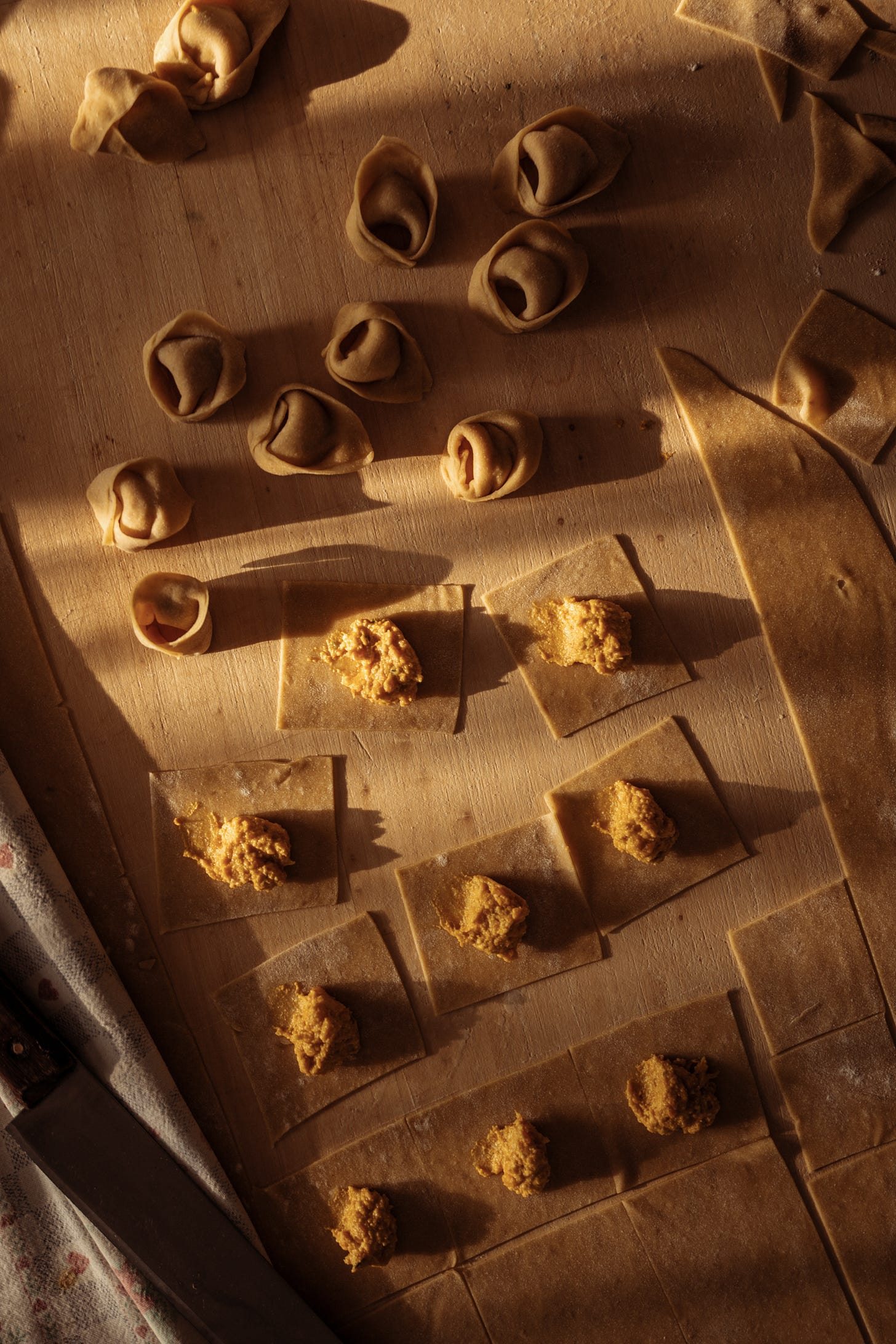A Brief History of Tortelli di Zucca
Variations and Technique of one of Northern Italy's Favorite Pastas
This post contains cooking tips, variations, and history related to this recipe. To get straight to the recipe, skip to the bottom of the post.
The recipe focuses on how to make the filling rather than the actual pasta. But worry not if you can’t or don’t want to make your own pasta - you can use the filling recipe as a pasta dressing. Scroll down to know how.
Wether we like it or not, most foods for which Italians have a strong opinion were born relatively recently - post-war at the earliest.
As this town or that region constantly manifests the urge to claim the paternity over Gricia or Tiramisù, someone will start historical enquiries around many Italian staples. But, while some classics probably find their origin as far back as the middle ages, most beloved recipes as we know them today are hardly over 60-70 years old.
The case for tortelli di Zucca, though, takes us as far back as the 1500s and, as Claudia Roden states in her Book of Jewish Food, is to be searched in Mantua - specifically in its Jewish Ghetto, as well as in the court of the Gonzaga, as they appear in Cristoforo da Messisbugo’s cookbook, the head chef at the court of the Gonzaga, which he wrote in 1544. Later, the court chef for the Este family in Ferrara also wrote his version. All recipes featured sweet-fleshed pumpkin, some form of almond flavor (almond meal for the Jewish version, amaretto for the Mantua version), some sort of fruit (raisins for the Jewish version, mostarda di frutta for the Mantua version), spices, maybe cheese.
I am prone to thinking that Claudia Roden is right in attributing their birth to the Jewish ghetto. Pumpkin was a new ingredient hailing from the Americas, which the Sephardim had access to - along with spices and nuts - via their market routes from Portugal and Spain. Pumpkin eventually became widespread throughout the Padan plain, as it still is today.
It is also possible that both the Sephardim and the Gonzaga had the same idea in creating a dish that could be used for the same purpose: being perfectly in line with religious food rules. For Jews, it was a perfect dish which followed Kosher rules. For the court of Gonzaga, it was a perfect Christmas Eve’s dish ‘di magro’, with no meat or heavy animal fat. Ingredients such as rasins, spices and almonds were common in medieval courts and heavily consumed by the nobility, way less so by commoners, who had no access to such ingredients. Very likely, it was the Sephardim market with Spain and North Africa which gave the Court access to the ingredients needed to make tortelli.
While the Sephardim originally made them with ground almonds and raisins, the tortelli filling took different turns and regional variations throughout time and space. In Mantua, they were eventually enriched with amaretti and Italian Mostarda (a piquant, very strong kind of candied fruit flavored with mustard essence), while Ferrara dropped most of the drama and made them with lots of Parmigiano, gaining a hint of balsamic vinegar as a final dressing as they approach Modena.
Keep reading with a 7-day free trial
Subscribe to L'Appetito (The Appetite) to keep reading this post and get 7 days of free access to the full post archives.









